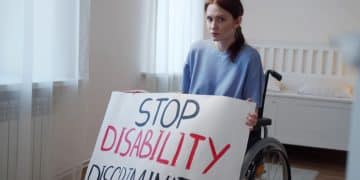Expanded forgiveness programs for student debt holders

Expanded forgiveness programs for student debt holders provide critical relief options that can reduce loan balances and improve financial health, given that eligibility criteria and application processes must be carefully followed to ensure approval.
Expanded forgiveness programs for student debt holders are gaining attention as a solution to help ease financial struggles. Have you ever felt overwhelmed by your student loans? Let’s explore the options available to lighten that load.
Understanding expanded forgiveness programs
Understanding expanded forgiveness programs is essential for student debt holders seeking relief. These programs are designed to offer financial aid and alleviate some of the burdens created by student loans. With various options available, it is vital to know what these programs entail and how they can assist borrowers in achieving financial freedom.
Types of Forgiveness Programs
There are several types of forgiveness programs available, each catering to different needs and situations. Here are some key types:
- Income-Driven Repayment Plans: These plans adjust your monthly payments based on your income and family size.
- Public Service Loan Forgiveness: For those employed in public service, this program forgives your remaining loan balance after 120 qualifying payments.
- Teacher Loan Forgiveness: Teachers who work in low-income schools may qualify for forgiveness of up to $17,500 on their direct loans.
Each program has specific eligibility requirements and application processes. Understanding these can help you make an informed decision about which option may apply to your situation. The expanded forgiveness programs focus on making loans manageable for borrowers, considering their repayment capabilities.
Eligibility and Application
To qualify for these forgiveness programs, you must meet certain criteria. The eligibility requirements can vary significantly based on the type of program. Some common factors include:
- Your job and employment history.
- The type of loans you have (federal vs. private).
- The repayment plan you are enrolled in.
Applying for these programs typically involves submitting specific documentation, such as employment certification forms and loan details. It’s important to stay organized and keep track of all required paperwork to ensure a smooth application process.
As you explore your options, remember that utilizing expanded forgiveness programs can provide much-needed financial relief. However, it also requires diligence and understanding of the terms and conditions of each program.
Eligibility criteria for student debt relief

Eligibility criteria for student debt relief can vary based on the specific forgiveness program you are considering. Understanding these criteria is crucial for borrowers looking to ease their financial burdens. Each program has distinct requirements that you must meet to qualify for assistance.
Common Eligibility Requirements
Many programs have similar eligibility factors that potential applicants should review. Here are some common requirements:
- Type of Loan: Generally, only federal student loans qualify for most forgiveness programs. Private loans typically do not.
- Employment Status: Some programs require borrowers to be employed in specific sectors, such as education or public service.
- Payment History: Timely payments on your loans may be necessary to demonstrate responsible borrowing behavior.
- Income Level: Income-driven repayment plans often require proof of income to adjust monthly payments accordingly.
It is important to gather all necessary documentation early in the process. This can include tax returns, pay stubs, and loan statements. Being prepared will make your application smoother.
Special Circumstances
In some cases, borrowers with unique situations may still qualify for debt relief. For example, those with disabilities or who face hardships may have different pathways to pursue forgiveness. Understanding these nuances can help borrowers find options tailored to their circumstances.
As you navigate through the eligibility requirements for student debt relief, stay informed about any updates or changes to the programs. Rules can shift, and new options may arise that could provide relief.
How to apply for forgiveness
Applying for forgiveness can seem overwhelming, but understanding the steps can simplify the process. Knowing how to apply is crucial for student debt holders looking to relieve their financial burdens. This section will guide you through the key steps and necessary documentation needed for a successful application.
Steps to Apply for Forgiveness
Begin by determining which forgiveness program you’re eligible for and that aligns with your financial situation. It’s important to gather all the necessary information and documents before starting the application process. Here are the steps to follow:
- Research Program Requirements: Review the specifics of the forgiveness program to understand what is required.
- Gather Documentation: Collect required documents, such as income statements, tax returns, and loan information.
- Complete the Application: Fill out the application accurately. Pay close attention to details to avoid delays.
- Submit the Application: After reviewing everything, submit your application according to the program’s guidelines.
Once you’ve submitted your application, be patient. It can take time for the lender or servicer to process your request. During this period, keep track of any communications and deadlines related to your application.
Important Tips
As you proceed, consider these helpful tips for a smoother application experience:
- Stay Organized: Keep all documents and correspondence in one place to streamline the process.
- Follow Up: If you don’t receive confirmation, follow up with the loan servicer to check on your application status.
- Utilize Resources: Seek help from financial advisors or organizations experienced in student debt relief.
Applying for forgiveness is an important step towards managing your student loans. With proper preparation and understanding, you can navigate the application process more easily.
Mistakes to avoid during the application process
When applying for student debt forgiveness, it’s essential to avoid common mistakes that can hinder your chances of approval. Being aware of these pitfalls will help you navigate the process more effectively and ensure your application is submitted correctly. Understanding what to avoid is just as important as knowing what to do.
Common Pitfalls
Many applicants make the same errors during the application process. Here are some mistakes to steer clear of:
- Incomplete Applications: Failing to fill out the application completely can result in delays or automatic denials. Always double-check for missing information.
- Ignoring Deadlines: Each forgiveness program has specific deadlines. Missing them could mean starting the process all over again.
- Not Keeping Records: Keeping documentation of all submitted forms and communications is vital. Losing track can lead to issues down the line.
- Ignoring Eligibility Criteria: Make sure you fully understand the eligibility requirements before applying. Applying for a program you don’t qualify for wastes time and effort.
By being mindful of these mistakes, you can enhance your chances of a successful application. Additionally, understanding the importance of thoroughness in this process cannot be overstated.
Best Practices
In addition to avoiding mistakes, following best practices can lead to a smoother application experience. Here are some tips to follow:
- Read All Instructions: Carefully review all instructions provided by the forgiveness program to ensure compliance.
- Use Clear Language: When filling out forms, use clear and concise language to avoid confusion.
- Seek Help if Needed: Don’t hesitate to contact the loan servicer for clarification on any confusing points.
Approaching the application with diligence will not only help you avoid problems but will also set you up for potential success. Taking these steps seriously can save you time and effort.
The impact of forgiveness on your credit score
The impact of forgiveness on your credit score is an important consideration for student debt holders. Many people worry that applying for forgiveness will harm their credit rating rather than help it. Understanding how forgiveness can influence your credit is vital for making informed financial decisions.
Short-Term Effects
Initially, applying for forgiveness won’t directly affect your credit score. However, during the application process, your lender may review your credit history. This could result in a hard inquiry, which may cause a slight dip in your score. Yet, most people see this effect fade over time.
Long-Term Benefits
Once you receive forgiveness, the benefits can lead to a positive shift in your financial health. Having a decreased debt load from student loans can improve your credit utilization ratio, which is a significant factor in credit scoring. A reduced balance can boost your overall credit health.
- Improved Cash Flow: With lower monthly payments or no payments, you may find it easier to manage other bills, positively impacting your payment history.
- Increased Credit Utilization: Reduced student loan balances can help lower your overall credit utilization, making you a more attractive borrower to lenders.
- Potential for New Credit: Higher credit scores may give you access to better interest rates on future loans or credit cards.
Many borrowers report feeling a sense of relief after receiving forgiveness, which can encourage them to manage their finances more responsibly. This change often results in lower debt stress, enabling them to focus on maintaining timely payments on other accounts.
Monitoring Your Credit
After receiving forgiveness, it’s important to monitor your credit report regularly. Request a free copy of your report each year to check for any inaccuracies or changes. Staying informed will help you understand how forgiveness has impacted your credit score and what steps you can take to maintain or improve it further.
In conclusion, understanding the impact of forgiveness on your student debt is crucial for anyone navigating this financial landscape. By applying for forgiveness, you can alleviate the pressure of student loans, leading to improved financial health and credit scores.
Remember to avoid common mistakes during the application process and to stay informed about your credit report after receiving forgiveness. With careful planning and awareness, you can take significant steps toward achieving your financial goals.
FAQ – Common Questions About Student Debt Forgiveness
What types of student loans qualify for forgiveness?
Most federal student loans qualify for forgiveness programs. Private loans typically do not.
How does forgiveness affect my credit score?
Receiving forgiveness can improve your credit score by reducing your debt load and improving your credit utilization ratio.
What are common mistakes to avoid during the application process?
Common mistakes include submitting incomplete applications, missing deadlines, and failing to keep records.
How can I monitor my eligibility for forgiveness programs?
Stay informed by checking official resources regularly and keeping track of any changes in program requirements.





